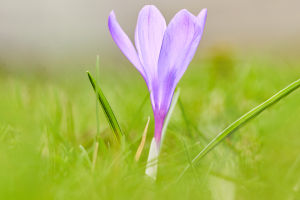Cacti: Nature’s Air Purifier
When cultivating indoor plants, people often worry that plants may release carbon dioxide at night, negatively impacting air quality.
However, growing cacti indoors is an exception; instead of polluting the air, cacti help increase negative ion concentration, making the air fresher and enhancing well-being.
Known for their resilience and distinctive forms, cacti are common greenery found on balconies, office desks, and public gardens. Cacti hold many fascinating secrets beyond their tough spines and occasional vibrant blooms.
Cacti comprises over 2,000 species, mainly distributed in the arid regions of South America, Africa, Southeast Asia, and southern China. Their fleshy stems store considerable water, while their leaves have evolved into spines, reducing water evaporation.
This adaptation allows cacti to survive and continue growing even under extreme drought conditions, earning them the title of "survival experts of the plant world."
Not only do cacti adapt to dry climates, but they also absorb carbon dioxide at night through a unique stomatal regulation mechanism, releasing oxygen and increasing negative ions in the air.
Thus, placing cacti indoors can help purify the air, especially at night, as this respiratory process improves indoor air quality, allowing people to enjoy fresher air.
In terms of medicinal uses, cacti offer a variety of benefits. According to Compendium of Materia Medica Supplement, cacti has a cooling and mild taste and is believed to promote blood circulation, reduce heat and detoxify, and relieve swelling and pain.
It can be taken internally or applied externally to treat various ailments, including common inflammations like mastitis and parotitis.
Modern research shows that cacti extracts also have antibacterial and anti-inflammatory properties, effectively inhibiting the growth of bacteria such as Staphylococcus aureus and Escherichia coli. Additionally, cacti extract has shown antiviral activity by inhibiting DNA and RNA virus replication, helping to combat infections.
Another notable function of cacti is lowering blood sugar. As early as 1925, studies found that cacti extracts could reduce blood sugar levels. In regions such as Mexico and parts of China, cacti is even processed into tablets and pills to treat diabetes.
Cacti extract has been shown to effectively improve glucose metabolism in patients with type 2 diabetes, making it a promising natural approach for blood sugar management.
When it comes to home care, cacti are hardy plants that thrive in sunlight and drought conditions, making them well-suited for a sunlit balcony. The ideal temperature for cacti growth ranges between 20 to 30°C, and they require intense sunlight during the day with a slight temperature variation between day and night.
In spring and autumn, watering should follow the principle of "only water when dry." During the peak growth season, from June to August, cacti generally need thorough watering each morning, with additional watering in the evening depending on the weather.
To encourage growth or more shoots, increase watering; to control plant size or promote blooming, reduce watering. Aside from the hot midday sun in summer, cacti can be safely exposed to full sunlight.
In winter, during the dormant period from November to March, cacti should be placed in a sheltered area, maintaining room temperatures above 5°C, with minimal watering to keep the soil slightly moist.
Cacti also benefit from repotting once or twice a year, ideally in spring or autumn, with slightly alkaline soil that provides good drainage and aeration. The plant should be planted at a stable depth in the pot without being buried too deeply.


